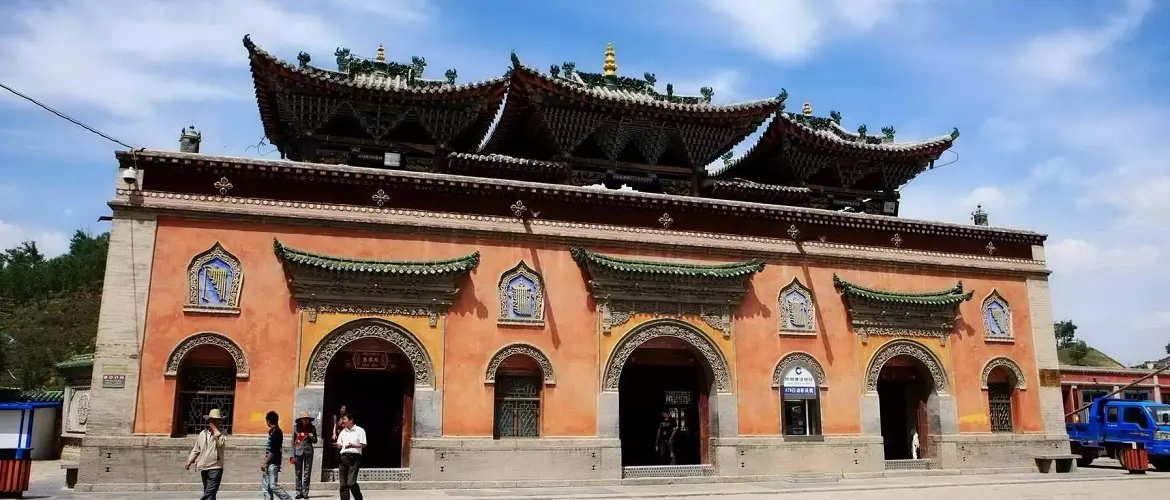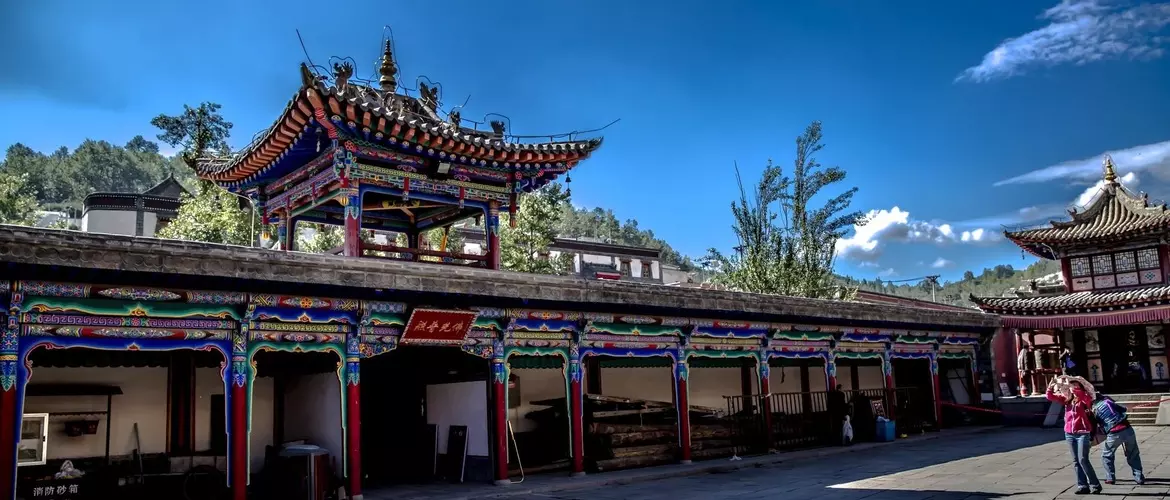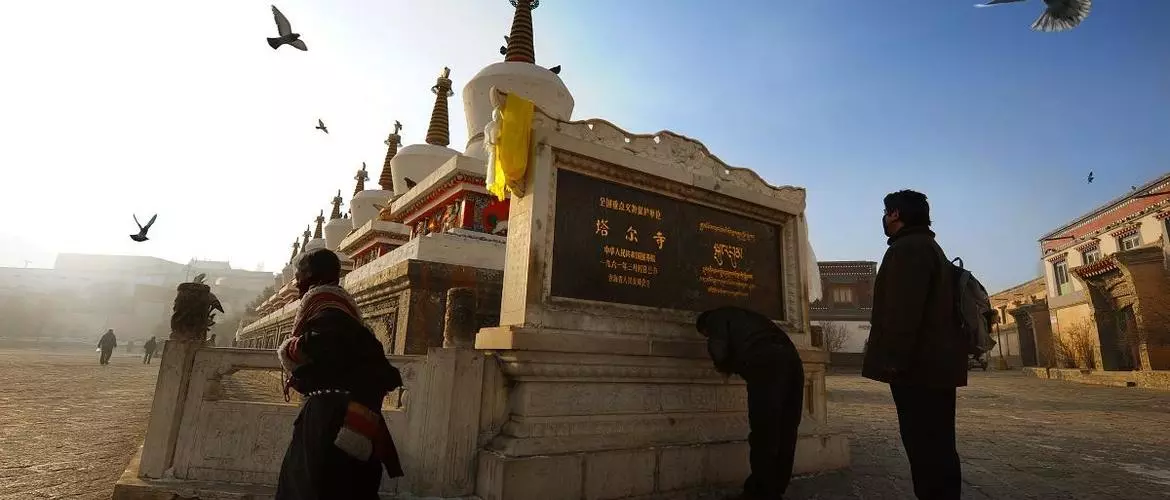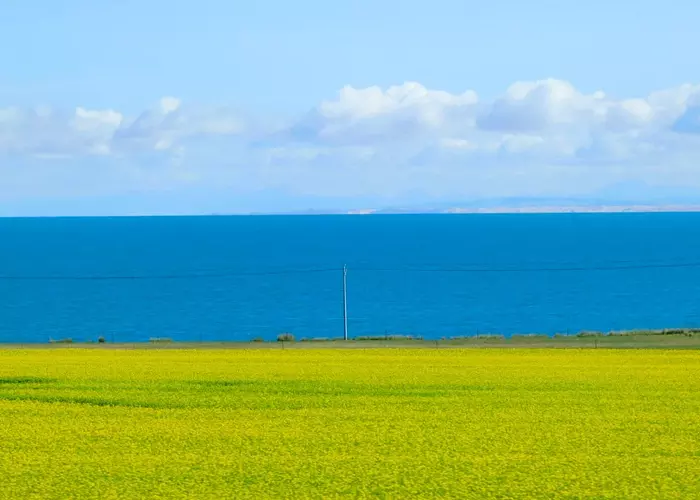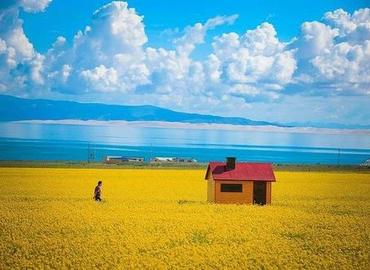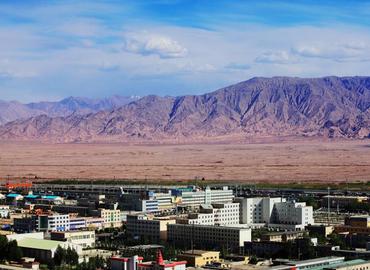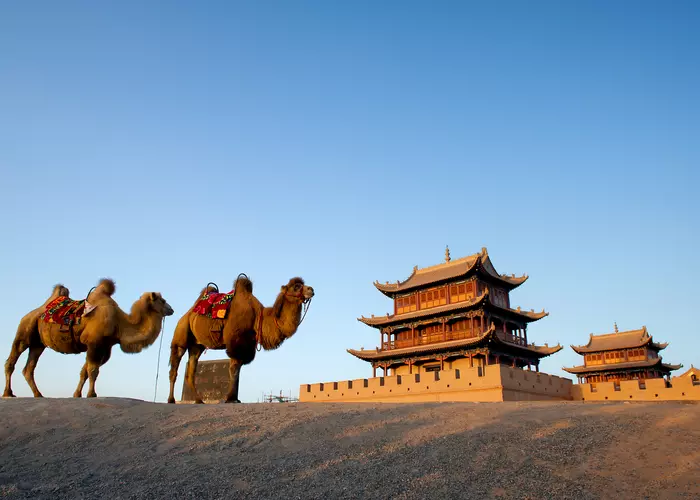Kumbum Monastery (Ta'er temple) is located in Huangzhong County, 25 kilometers southwest of Xining city, Qinghai Province, which is within the Tibetan region of Amdo. In Tibetan, a Kumbum is a multi-storied aggregate of Buddhist chapels. Kumbum Monastery is transliterated as 100,000 figures of Buddha. Kumbum Monastery is the birthplace of Master Tsongkhapa, founder of Gelug Sect of Tibetan Buddhism. A silver tower was first built in memory of Master Tsongkhapa in 1379. A temple was second-built in the 39th year of Jia Jing (1560) in the Ming Dynasty. After that, a group of huge buildings was gradually constructed. Centered on the silver tower, it consists of over 9,300 rooms and 52 halls, pagodas, Palace buildings, Buddhist temples, dormitories, and a courtyard.
Kumbum Monastery is known as one of the six monasteries of the Gelug Sect of Tibetan Buddhism in China (the other five are Gandan, Drepung, Sera, Tashilhunpo in Tibet and Labuleng Temple in Gansu Province). Historically, it was highly valued during the Ming and Qing Dynasties. The 3rd, 4th, 5th, 7th, 13th, and 14th Dalai Lama and the 6th, 9th and 10th Panchen Masters once conducted religious activities in the temple. Nowadays, it is the highest institution of Buddhism in Qinghai Province, which includes four schools (sutra).
Things to Do in Kumbum Monastery
For centuries, this monastery has been of crucial importance to Western explorers and researchers. Many explorers spent some time here. It is now not only a sacred place for Buddhism you can feel a strong religious atmosphere here but also rich in fascinating arts. The famous butter sculptures, the parabolas heap embroidery, and the murals are considered to be the three most unique arts of superb craftsmanship.
Architecture
In Buddhism, the lotus flower and the dharma chakra are two sacred objects that symbolize auspiciousness, completeness, and happiness. The Lotus Mountain where the Kumbum monastery is located is named because its surrounding eight canyons resemble the dharma chakra and eight gently receding mountains resemble an eight-petalled lotus. The temple complexes standing in the middle are just like the stamens of the lotus flower. Covering an area of 144,000 square meters (about 36 acres), the structure of the monastery is a combination of Han and Tibetan technologies and it shows its own features perfectly. The building complexes and the mountains' view are all in one and complement each other well.
Grand Golden Roof Hall is located in the middle of the whole temple. It was first built in 1560 AD and later refurbished the roof with 1,300 taels of gold and more than 10,000 taels of silver to a Han-style golden roof. A gold plaque from Emperor Qianlong was hung in the hall. Inside the hall stands the 12.5-meter-high silver tower, which is where Tsongkhapa was born. The silver tower is made of sterling silver, plated with gold, inlaid with various jewelry, and wrapped in dozens of layers of white Khatas to show nobility. There is a niche on the tower with a statue of Tsongkhapa. Kinds of butter lamps, silver drum horns, and jade furnace golden buildings are displayed in front of the tower. The beam was covered with curtains, streamers, embroidered Buddhas, and layers of Khatas. The whole building looks majestic.
Main Assembly Hall is the place where the monks chant the sutra. It is the largest building of the complex and can be used by more than a thousand lamas to chant at the same time. The interior furnishings are very sophisticated, with five-colored streamers hanging on the beams, and a large scale of heap embroidered Buddhas hanging on the walls. The whole hall is colorful and magnificent.
Three Wonders of Kumbum Monastery
Butter flower is a special art of shaping objects with butter. The butter flower artists knead the pure white butter with various kinds of stone mineral dyes and shape it into various Buddha statues, figures, flowers, trees, birds, and animals, some of which also constitute religious stories, life on earth, and heaven and fairy tales. Every year on the 15th day of the first lunar month, the annual ghee flower exhibition will be held in the Kumbum monastery.
The form of murals is unique, which were mostly painted on the cloth curtain. The dyes used in the murals are natural stone minerals, so they are of bright color and durable and have strong printing and Tibetan flavor. The content of the mural is mostly Buddhist doctrines. And the picture conception is ingenious.
Heap embroidery is one of the original Tibetan arts of the Kumbum monastery. It is cut into various Buddha statues, figures, flowers, birds and beasts with various colorful satin, and then filled with wool or cotton. At the last step, they are embroidered on the cloth. Therefore, heap embroidery has an obvious three-dimensional sense and looks vivid. The content is mostly based on Buddhist stories and religious life.
How to Get to Kumbum Monastery
The high-speed special bus line from Xining City to Kumbum Monastery takes half an hour, the fare is 5.5 yuan, so this is the best choice. Some normal-speed bus lines in Xining City run every 5-10 minutes, and the journey takes about 40 minutes. Taking a taxi from the airport to the temple takes 45 minutes.
Best Time to visit Kumbum Monastery
The weather from July to October is suitable for traveling in the Kumbum monastery. The entrance fee is CNY70, and the open hours are from 7:00 to 18:00 every day; whereas CNY40 in the low season, is from 08:00 to 17:00. 2~3 hours are recommended to visit.
Chengdu-Xining-Lhasa
Get close to Giant pandas. Hop on the Sky Train from Xining to enjoy alpine scenery. Explore Tibetan Buddhism in Lhasa.
Urumqi - Turpan - Dunhuang - Jiayuguan - Zhangye - Xining - Lhasa
Embark on a journey along the ancient Silk Road to Lhasa, immersing yourself in the beauty of nature and culture.
Email response within 0.5~24 hours.


